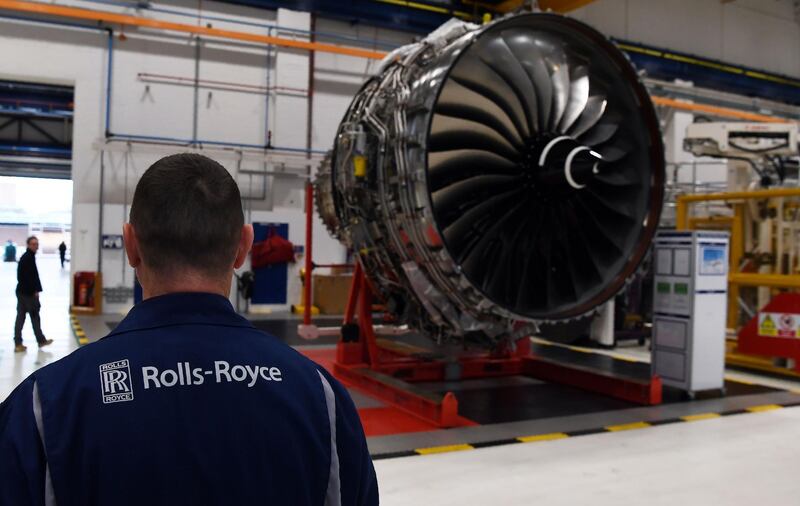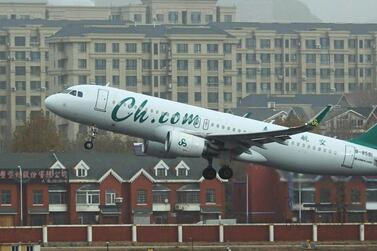Rolls-Royce has expressed interest in providing the engines for a new, midrange jetliner if Boeing decides to move forward with a concept later this decade.
In recent weeks, the US planemaker has reached out to the British engine manufacturer to gauge its interest in a potential new aircraft, according to sources. The midsize jet would be designed to fill a gap in Boeing’s product lineup and blunt the success of an Airbus sales dynamo, the A321neo.
The conversations centred on an early-stage concept with specifics that are in flux, sources said. Boeing isn’t yet massing resources or conducting wide-ranging studies with airlines and lessors, as is typical ahead of a new development programme, one source said.
Indeed, the project’s chances of moving forward depend on numerous variables, including the emergence of new engine technology to entice customers, the financial health of aerospace manufacturers and the recovery of a jetliner market that has been flattened by the coronavirus pandemic.
Rolls-Royce and Boeing declined to comment. The Wall Street Journal reported earlier this week that Boeing had reached out to suppliers and customers about a potential new single-aisle airplane that seats between 200 and 250 travellers.
Analyst responses to the prospect of Boeing weighing a new development programme amid the worst downturn in aviation history varied, with views ranging from supportive to incredulous.
It’s “absurd” to expect a new Boeing plane to emerge soon, given the risk of cannibalising sales from the company’s own 737 Max and the financial strain on airlines and manufacturers, said Douglas Harned, an analyst at Bernstein.
“There is not a next generation engine on the horizon and engine OEMs are so cash-constrained they would hardly prioritise developing one,” he said in a report on October 22, referring to Rolls-Royce and other turbofan manufacturers.
But Boeing is at risk of losing significant market share to Airbus because of the prolonged grounding of the Max, which has been banned from the skies since March 2019 after two fatal accidents killed 346 people. The model is expected to win regulatory approval to fly again in the coming months.
Boeing should seriously consider investing in a new family of single-aisle jets to remain competitive over the long term, said Ron Epstein, an analyst at Bank of America.
”Hard times demand hard decisions,” said Epstein. An all-new design would reach the market as travel rebounds from the pandemic, he added.
“If they want to stay relevant, they have to do a plane,” Mr Epstein said. “And managing the company just for returning cash to shareholders and cutting costs – that’s not going to get them there. That’s yesterday’s strategy.”
At the urging of Boeing’s new chief executive, Dave Calhoun, the Chicago-based company scrapped plans for the so-called NMA, or new midmarket aeroplane, earlier this year. That design, with an oval-shaped fuselage and a twin-aisle cabin, was targeted at flights of about 5,000 nautical miles.
Instead, Boeing’s sales team fanned out to discuss other proposals to replace its ageing 757 and 767 jetliners and compete with Airbus, the people said. The European plane maker’s A320 family includes an extra long-range version known as the A321XLR, which has emerged as a 757 successor with sales to the likes of United Airlines and American Airlines.
The Boeing concepts included a large single-aisle jet, with a carbon-composite frame, capable of hauling more than 200 travellers across the Atlantic Ocean. Its turbines would produce 50,000 pounds of thrust, the same requirement as the NMA’s engines.
But as the pandemic has left Boeing and its largest customers struggling to survive, the talks were tabled and the aerospace titan disbanded the team of more than 1,000 engineers who had been working on futuristic models, including the NMA, sources said.
Since then, a small team has been tending to the design concepts while Boeing focuses on cutting costs and bringing the Max back into commercial service.
Rolls-Royce has been especially hard hit by the pandemic because it only provides engines for wide-body planes. Many of those aircraft remain grounded because they are largely used in international travel, which has been slammed by virus fears and health restrictions. The embattled engine maker said in early October that it was exploring partnerships for its Ultrafan engine programme.
When Boeing was still actively developing the NMA, Rolls-Royce pulled out of consideration, saying its new engine wouldn’t be ready by the plane’s targeted debut in the mid-2020s. Rolls-Royce would only move forward with the latest Boeing concept if it made commercial sense, one source said.
With the pandemic having set back the timetable for investment in new aircraft programs, Rolls-Royce is now attempting to make the Ultrafan available toward the end of the decade. The engine is set to use a geared turbofan technology to generate fuel efficiency, and will be scaleable from 25,000 pounds of thrust up to 100,000 pounds.







